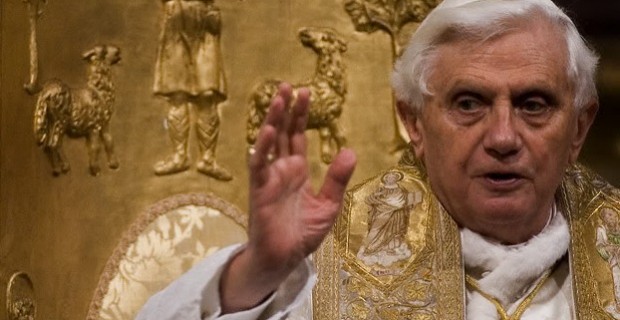One of the many lasting legacies of the papacy of Benedict XVI concerns liturgical music. Enormous progress has been made in his papacy. Incredibly this progress has happened without new legislation, new restrictions, new mandates, or firm-handed attempts to impose discipline on musicians and artists. The change has happened through the means that Benedict XVI has always preferred: he has led through example and through the inspiration provided by his homilies and writings.
You can observe the difference by watching any Papal liturgy, whether live or on television or through webcast. Gregorian chant is back but not just as a style preferred to the pop music that still dominates parish liturgy. More importantly, chant is back in its rightful place as the sung prayer of the liturgy. Viewers can now depend on hearing the chanted introit from the liturgical books at every Mass. The communion chant is sung. The offertory chant has made a return in many Masses. Incredibly, even the ancient version of the Psalm between the readings has more recently been employed as a deeply contemplative alternative to the responsorial version most people hear at Mass.
The musical legacy turns the tide and foreshadows a future of beauty in Catholic art.
The musical issue in the Catholic Church has been fraught with controversy for many centuries. This is nothing new. Nor is the postconciliar crisis in music something particularly new in Church history. We tend to think it is just because we experience it so intensely. And this feature is precisely what makes liturgical music such a dicey issue. It affects everyone in the pew in the most profound way. Everyone has an opinion, and it is rarely positive.
Truly, you have to put yourself in the frame of mind of someone who doesn’t entirely understand what happened to liturgical music after 1965 to fully appreciate the shock that comes when one first encounters the parish reality.
The Musical Legacy of Benedict XVI
My article in CRISIS this morning.

